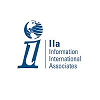
Bonnie Carroll cannot believe “it’s been 25 years”
 (EDITOR’S NOTE: This is the first in a two-part series focused on Information International Associates in Oak Ridge and its founder, Bonnie Carroll.)
(EDITOR’S NOTE: This is the first in a two-part series focused on Information International Associates in Oak Ridge and its founder, Bonnie Carroll.)
By Tom Ballard, Director of Innovation and Entrepreneurial Initiatives, Pershing Yoakley & Associates. P.C.
“It’s hard to imagine it’s been 25 years,” Bonnie Carroll told us during a recent interview where she reviewed the quarter of a century since she founded Information International Associates (IIa).
The Chair and Chief Executive Officer of IIa made a strategic decision in 1988 to transition from being what she called “a consultant making a good living, but not building something with equity” to becoming an entrepreneur with all of the associated challenges.
The decision was clearly a good one. Today, Carroll is undoubtedly one of the most successful entrepreneurs, male or female, in Oak Ridge. She enjoys a national reputation in her field including leading a number of professional societies and winning prestigious awards.
In addition, IIa now boasts offices in Tullahoma (Arnold Air Force Base); Dallas, TX; Dayton, OH; Falls Church, VA; Havertown, PA; Rockville, MD; and Suffolk, UK in addition to the headquarters in Oak Ridge.
During our extended discussion with Carroll, she discussed her professional life before founding IIa, the 25 years of riding the start-up roller coaster, and the lessons she’s learned throughout the journey.
The former Department of Energy (DOE) employee was working in the library at Oak Ridge National Laboratory (ORNL) when she had an opportunity to engage one day with Alvin Weinberg, the legendary Laboratory Director known for his keen mind and insightful questions.
Describing him as “an aggressive library user,” Carroll said Elizabeth Richardson, his assistant, called one day and asked her for information about the development of steam engines.
“I stayed late to give him an answer,” she recalled. That decision proved significant for the young information specialist as she began to interact more regularly with Weinberg. Years earlier, the ORNL Director had chaired a White House panel that delivered a report, aptly titled the “Weinberg Report,” that called for more aggressive dissemination of scientific and technical information.
The report is available by clicking here.
Carroll’s interactions with Weinberg led to her transferring to ORNL’s central management planning staff. The experience allowed her to better understand the roles that science, technology and information play in developing public policy and management decision making.
“One of the questions we were asked to answer was the role ARPANET might play at ORNL,” she recalled in referring to the precursor to what we now know as the global Internet. Another was to examine the value of social science to ORNL at a time when there was only one social scientist allowed on the payroll.
In 1974 Carroll participated in a study about the future of Y-12 when the three plants in Oak Ridge were all run under one operating contractor.
Two years later, Carroll was asked to take an ORNL temporary assignment to the then ERDA (Energy Research and Development Administration). During her four-month term, she helped develop what became the DOE Laboratory Strategic Planning process.
In her last position at ORNL, Carroll occupied a rotational assignment as Coordinator of the 22 Laboratory Information Centers under the then Assistant Director for Environment, Chet Richman. After two years, the time came for her to rotate out of that role. She decided to leave the lab, accepting a position at the Franklin Research Center.
A year later, Carroll says, “I got wind that OSTI (DOE’s Oak Ridge-based Office of Scientific and Technical Information) had a senior position open. I wanted to work for an organization where information was its top priority.”
She was selected for the position and spent the next seven years working for the agency. Next up was an opportunity to be Executive Director to start up the Institute for Advanced Information Technology, a “joint venture” between the University of Tennessee and local IT industry. She played that role until the organization decided to close its offices.
The year was 1988, and Carroll was focused on answering the question, “What’s next?” Consulting seemed to be a logical path. “I had a lot of contacts in the info world,” she noted.
One of those early clients wanted more expertise than Carroll alone could provide, so she was faced with what she described as “that infrastructural thing . . . hiring people.” Out of that decision came today’s IIa.
We’ll explore that part of the Carroll story in the next article in this series.
Like what you've read?
Forward to a friend!

